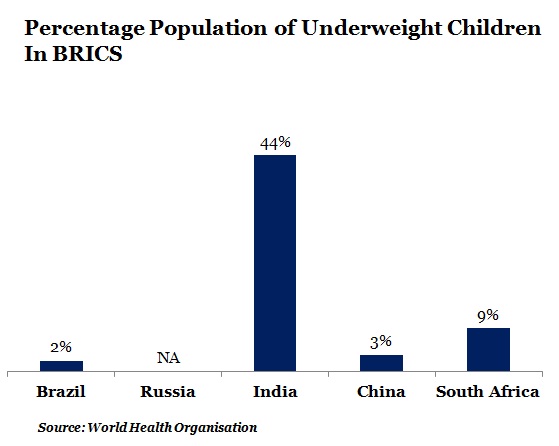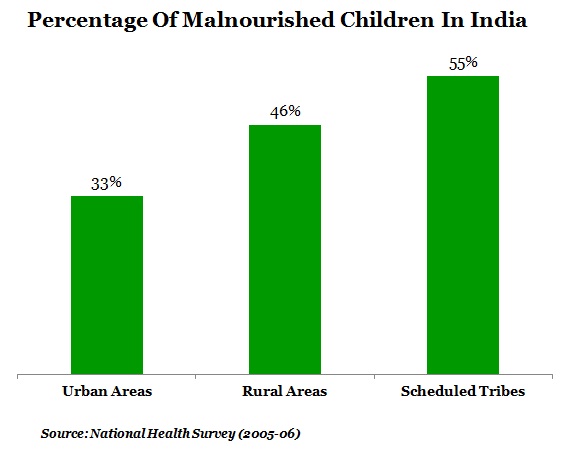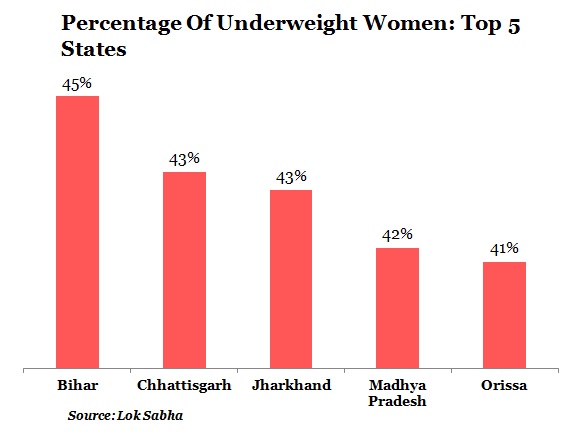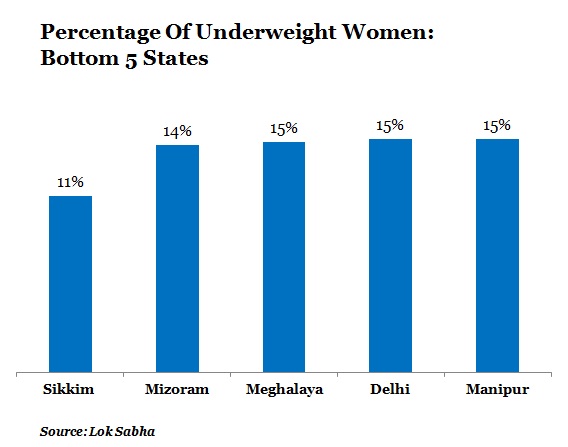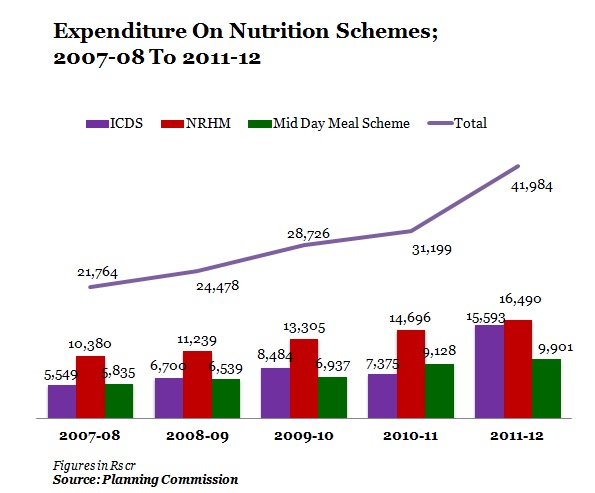Malnutrition Continues To Be Key Challenge For India
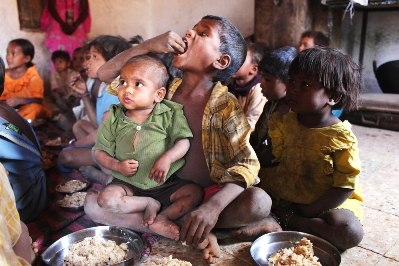 India is likely to have 33% malnourished children by the end of 2015 while the target under the Millennium Development Goals is to bring it down to 26%. According to UNICEF and the Global Health Database maintained by World Health Organization, India has more malnourished children than sub-Saharan Africa and nearly one in every 5 malnourished children in the world is from India.
India is likely to have 33% malnourished children by the end of 2015 while the target under the Millennium Development Goals is to bring it down to 26%. According to UNICEF and the Global Health Database maintained by World Health Organization, India has more malnourished children than sub-Saharan Africa and nearly one in every 5 malnourished children in the world is from India.
Here’s comparative data on child malnutrition for BRICs (Brazil, Russia, India, China & South Africa).
Figure 1
United Nations defines underweight children (or malnutrition) as the percentage of children aged 0-59 months whose weight for age is less than minus 3 standard deviations below the median weight for age of the international reference population.
Malnutrition is one of the leading causes (about 50%) of all childhood deaths. And malnourishment at an early age can lead to long-term consequences as it affects motor, sensory, cognitive, social and emotional development.
The latest National Health Survey (NHFS 3, 2005-06)of India’s Ministry of Health shows that 42.5% of Indian children under 5 years are underweight… and the prevalence in urban, rural areas and scheduled tribes is 32.7%, 45.6% and 54.5%, respectively.
Figure 2
Now for some positive news: there has been a decline in the number of malnourished children from 52.7% in 1991-92 (NHFS 1) to 47% in 1998-99 (NHFS 2) and to the current level of 42.5% in 2005-06 (NHFS 3)
The following table shows the top 5 and bottom 5 states based on underweight children.
Table 1
It is shocking to know that in the top 3 states (Madhya Pradesh, Jharkhand and Bihar),more than 50% of children (i.e. half their population of under 5 years) are malnourished. The highest number (63%) of underweight children in rural areas is in Madhya Pradesh and the lowest (19%) is in Rajasthan.
Another factor for malnutrition among children is access or lack of access to pre-natal care for the pregnant mother. Around one-third of adult women are underweight and the lack of health care and nutrition, especially for pregnant women, results in low birth weight among babies. Around 30% of all newborns have low birth weight, making them vulnerable to further malnutrition and disease. The following graphs show the state-wise percentage of underweight women (age 15 - 49 yrs).
Figure 3 (a)
Figure 3 (b)
Bihar has the highest number of women with chronic energy deficiency (age 15 - 49 yrs) with 45% and Sikkim has the lowest percentage with 11%.
So, what has been the government response to these issues? The government has more than tripled the expenditure on child health in the last decade from 0.33% of GDP in 2001-02 to 1.37% of GDP in 2011-12. The government has introduced various schemes that are primarily focussed on women and child health or at least have it as a key component.
So, programmes like Integrated Child Development Scheme (ICDS), National Rural Health Mission (NRHM), Mid-Day Meal Scheme, Rajiv Gandhi Scheme for Empowerment of Adolescent Girls (RGSEAG) and Indira Gandhi MatritvaSahyogYojana (IGMSY) are direct interventions while the National Food SecurityMission, Mahatma Gandhi National Rural Employment Guarantee Scheme (MGNREGS), Nirmal Bharat Abhiyan and NRDWP are indirect interventions.
Here is the break-up of funds received for direct interventions:
Figure 4
So, it can be seen from the table above that the expenditure on the nutrition-related programme has more than doubled to Rs 25,494 crore in 2011-12 from Rs 11,384 crore in 2007-08.
Let us now look at the health-oriented schemes: The ‘Sabla’ scheme was launched in 2011-12 to provide an integrated package to adolescent girls, which includes nutrition, micro-nutrient supplementation and health check-ups. A total of Rs 787 crore has been released for 2010-12. And the IGMSY scheme was launched to address malnutrition among pregnant women.
Despite increasing expenditures for health and nutrition, malnutrition continues to be high in India, especially among children and women. And it seems India is all set to miss the Millennium Development Goals (2015) set by the UN on reducing child and maternal mortality.
Vitamin A deficiency is one key area the government is focusing on to improve the health of children and reduce the cases of malnutrition. We will be looking at more details on the government programmes in this area soon.


